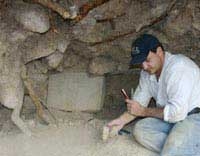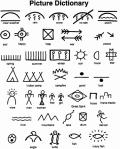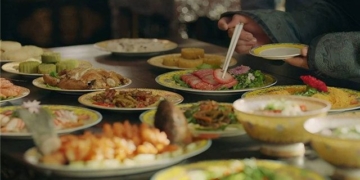After one month of implementation, the archaeological excavation project in the eastern area of Tower K at the My Son heritage site (Duy Phu Commune, Duy Xuyen) has uncovered many valuable insights, further confirming that the ground of My Son still holds many mysteries yet to be decoded.
On March 1, 2024, the archaeological excavation project in the eastern area of Tower K, coordinated by the My Son Cultural Heritage Management Board and the Archaeological Institute (Ministry of Culture, Sports and Tourism), officially commenced, covering a total area of 220m2 (with 20m2 for exploration and 200m2 for excavation). The duration is set for 2 months, concluding on April 29.

Traces of the road leading from Tower K to the center of the My Son temple complex. (Photo: K.L).
During the excavation, preliminary findings revealed the foundation of a compacted earth road (9m wide) leading into the My Son heritage site.
According to a project staff member, the exact name, function, or total length of the road cannot yet be determined (further research is needed), but the hypothesis regarding the main road used by the ancient Cham people to access My Son has been strongly reinforced.
“Although we did not discover many artifacts, some unusual points have emerged during the archaeological process, so we are continuing to study and seek explanations. However, it can be confirmed that this is the main road leading into the center of ancient My Son, not the path currently used by tourists,” the staff member stated.
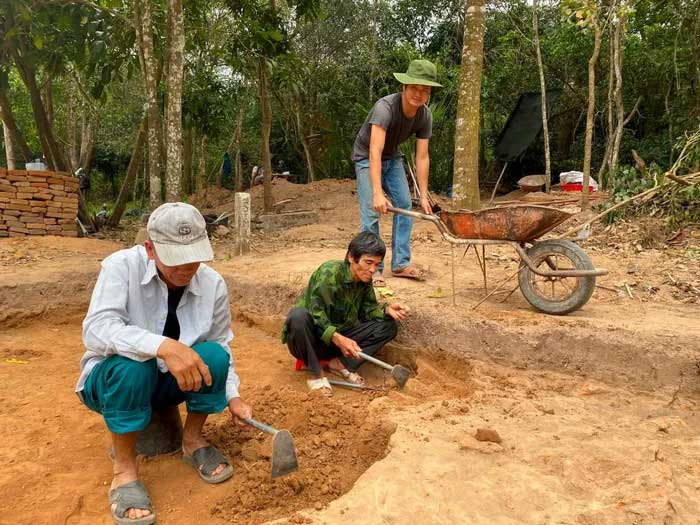
Workers continue to excavate the road leading to the center of the My Son temple complex. (Photo: K.L).
Tower K, dating back to the 11th-12th century, was built on a broad, elevated flat land. This solitary tower stands relatively independent from other tower groups. According to descriptions by French scholars in the early 20th century, Tower K resembles an entrance gate facing East-West and is built with brick walls. The relief features a figure with three heads and two arms, a lion statue, and has two gables, with no inscriptions found.
Entering the My Son valley via the Khe The stream or by the old road along the banks of Khe The stream, the first architectural structure encountered is Tower K. Due to its special location, experts believe the tower may serve as the first station welcoming pilgrims.
From 2016 to 2017, Indian specialists conducted explorations, excavations, and restorations of Tower K, revealing two enclosing walls of the pathway that runs east of Tower K leading into the main temple groups in the My Son valley. The exploration also discovered several architectural components and pottery fragments; however, the Indian experts did not continue further excavations.

The discovery of the ancient road leading into My Son has revealed many mysteries about the spiritual space layout of the heritage site. (Photo: K.L).
In early August 2023, the My Son Cultural Heritage Management Board collaborated with a working group from the Archaeological Institute led by Dr. Nguyen Ngoc Quy to open 5 pits (each measuring 4m2) to excavate the area around Tower K.
In the eastern area (behind) Tower K, traces of enclosing walls on the north and south sides of the road running east-west were discovered. In the western area (front) of Tower K, three exploratory pits were opened, revealing traces of the foundation of the road leading from outside to the tower entrance.
According to Cham cultural researcher Le Tri Cong, based on the overall layout of My Son and the beliefs of the ancient Cham people, this could be the ceremonial path for monks, nobles, and the royal family of the Champa kingdom.
Specifically, the path starts at Tower K (the gate tower – mandapa) and ends at groups of towers E or F. From there, additional paths may lead through groups G, A, B, C, D, and potentially to H, encircling in a clockwise direction (though group H still requires further research).
“This road may have existed before the 11th-12th century (the dating of Tower K); however, the Cham people reinforced and stabilized it as we see today,” Mr. Le Tri Cong speculated.
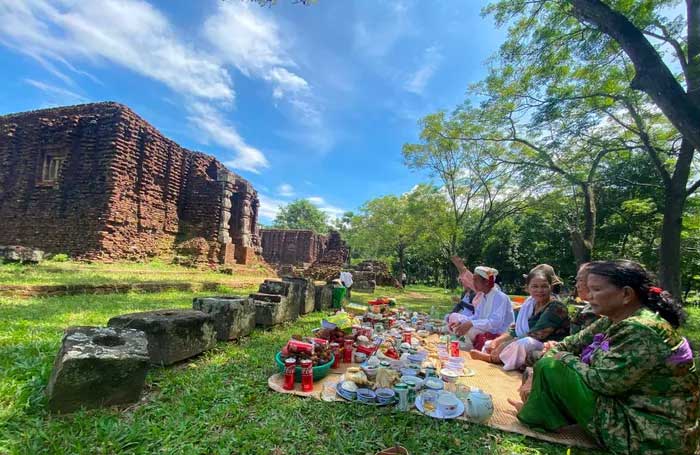
The Cham people performing rituals at My Son. (Photo: K.L).
| My Son was first constructed by the Cham people in the 4th century and continuously supplemented with various towers over the subsequent centuries. This process only concluded when the territory north of the Thu Bon River was integrated into the Great Viet territory (1306). |
Since the early 20th century, when French scientists arrived at My Son for research, they discovered 68 architectural structures distributed across 8 clusters, each with a main temple tower and auxiliary temples located in the center of a valley approximately 2km in diameter, with the main axis being the Khe The stream.
The discovery of the remnants of the road leading into the center of the heritage site further confirms that many mysteries about My Son remain buried within the earth, and the ceremonial path at Tower K is just one of them.
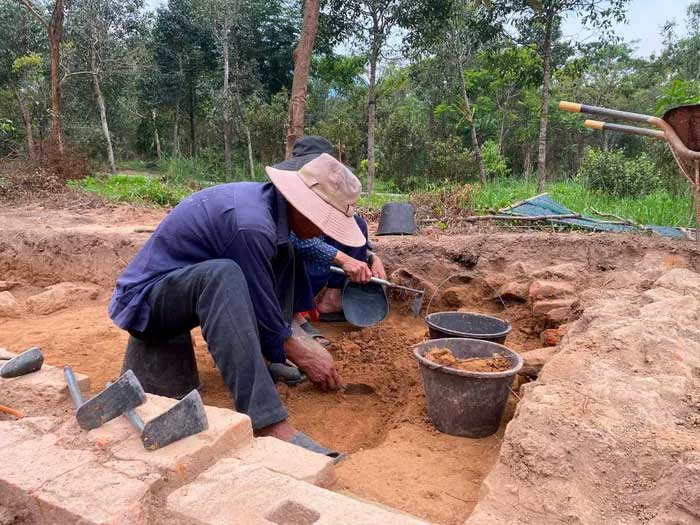
Many mysteries beneath the ground of My Son require continued exploration and research. (Photo: K.L).
In 2019, the archaeological exploration of the Double House area (approximately 300m from the core of the site) also revealed traces of ancient Cham civil engineering. Further back, in 2006, specialists from the Archaeological Institute also discovered numerous stone architectural remnants along the edge of the Khe The stream (east of Towers D1 and D2), further substantiating the assertion that My Son still holds many secrets.
Mr. Nguyen Cong Khiet – Deputy Director in charge of the My Son Cultural Heritage Management Board stated that after the project concludes, the unit will propose to relevant departments to continue excavating the road towards areas E and F to clarify the role and function of the road, aiming to preserve and promote its value for visiting tourists.









































